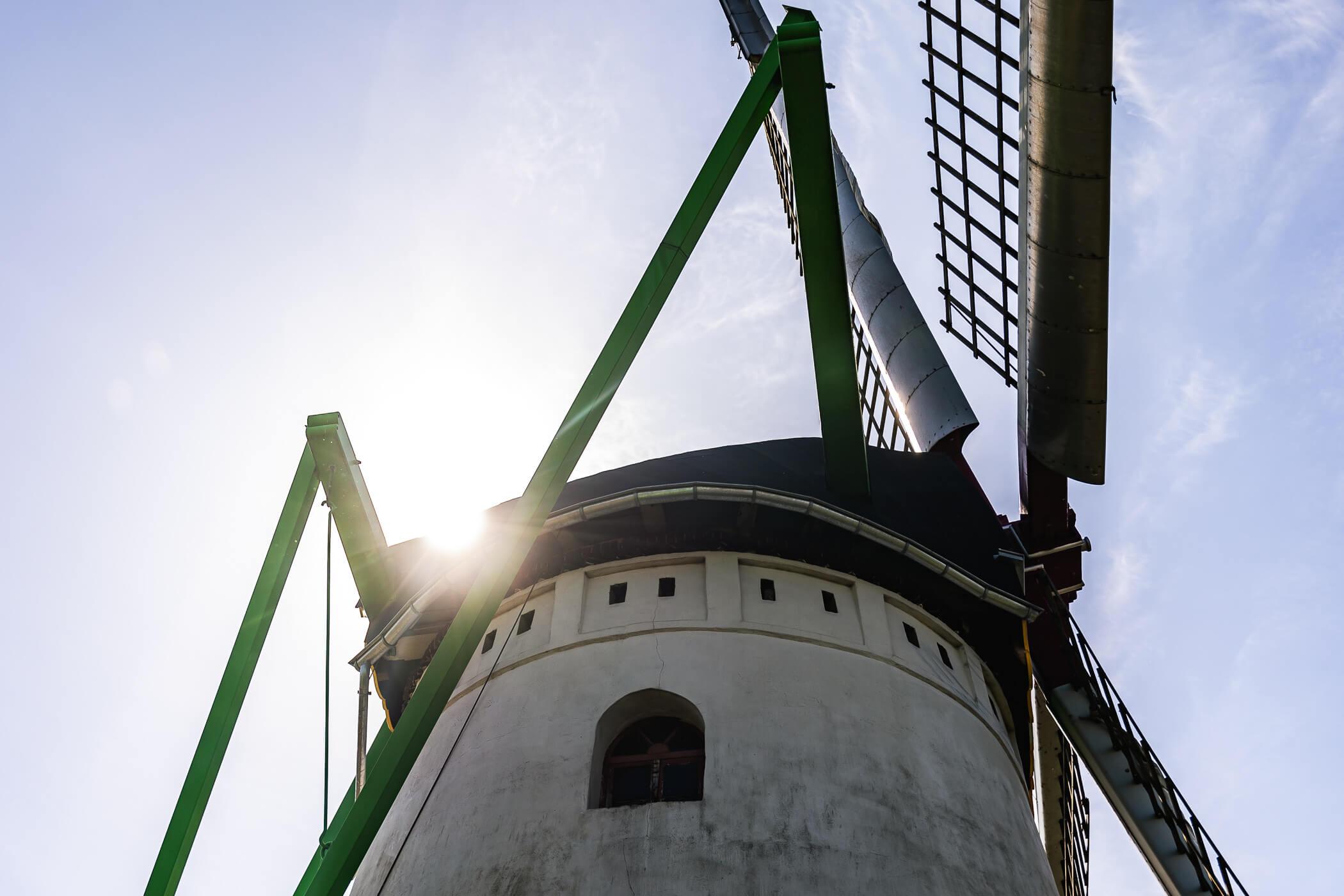
Kinrooi also plays in the first division when it comes to culture. As a fusion of five church villages, every corner of the municipality offers something for everyone. Apart from the three mills, the municipality has other notable monuments such as Borgitter Castle, the ruins of the mote tower and St Martin's Church, Slichtenhof, etc.
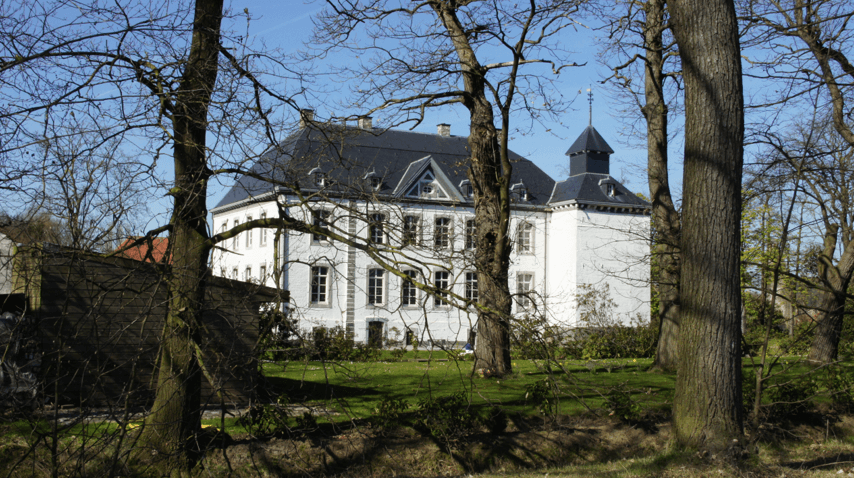
Borgitter Castle
"Where in the bronze-green oak wood ....", there lies Borgitter Castle. In the 16th and 17th centuries, the lords of Kessenich shifted their centre of power from the 'mountain castle' to Borgitter. Jan van Waes built the Borgitter water castle in the early 16th century. However, little remains of this castle today. Only the corner tower recalls an older building phase. The present Maasland-style classical building dates from the end of the 18th century. Behind the castle are the 18th-century farms Breukskenshof and Halfeshof, the steward's residence and a 17th-century water mill.
"... 't nightingale sings..." that is also where the Limburg national anthem was written. In the early 20th century, Dutchman Gerard Krekelberg wrote the lyrics here, which were later set to music. Nowhere else can you feel the Limburg feeling better than at Borgitter Castle.
Mind you, the entire property is privately owned.
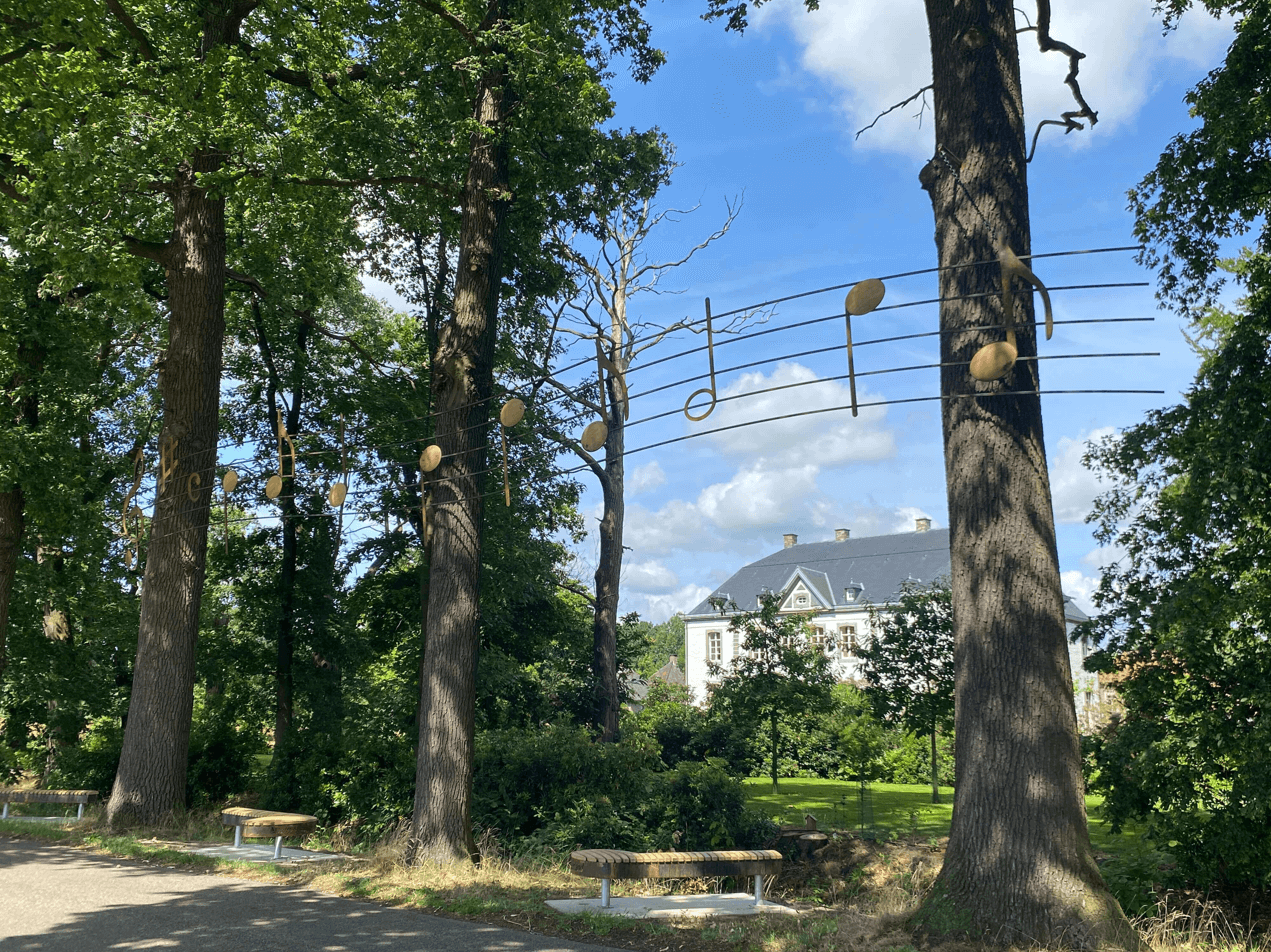
Monument Limburg National Anthem
"Where in the bronze-green oak wood the nightingale sings...". Who doesn't know the first sentence of our Limburg national anthem? This is the song every Limburger has sung several times, the song that starts many Limburg sports games, the song that connects Belgian Limburg and Dutch Limburg.
The Limburg national anthem was written around 1890 by Gerard Krekelberg, who was born in Neeritter, and was originally entitled 'Limburg my fatherland'. He found the inspiration for his poem among other things from the oak trees around Borgitter castle that had been there for centuries. Unfortunately, these oaks were largely felled in 1948.
The Limburg national anthem is now immortalised as a monument to acquaint the many passers-by with the origins of our beloved national anthem. A large stave hangs between the trees at Borgitter Castle. Some of the notes have fallen out to form benches in the shape of musical notes. The work of art is a tribute to Gerard Krekelberg and the Limburg folk song and symbolises the solidarity of both Limburgs.
If you soon pass by this beautiful spot or stop there to pause or enjoy the view and it starts to itch, don't hold back: hum, whistle or sing: "There is my homeland, Limburg's dearest place!"
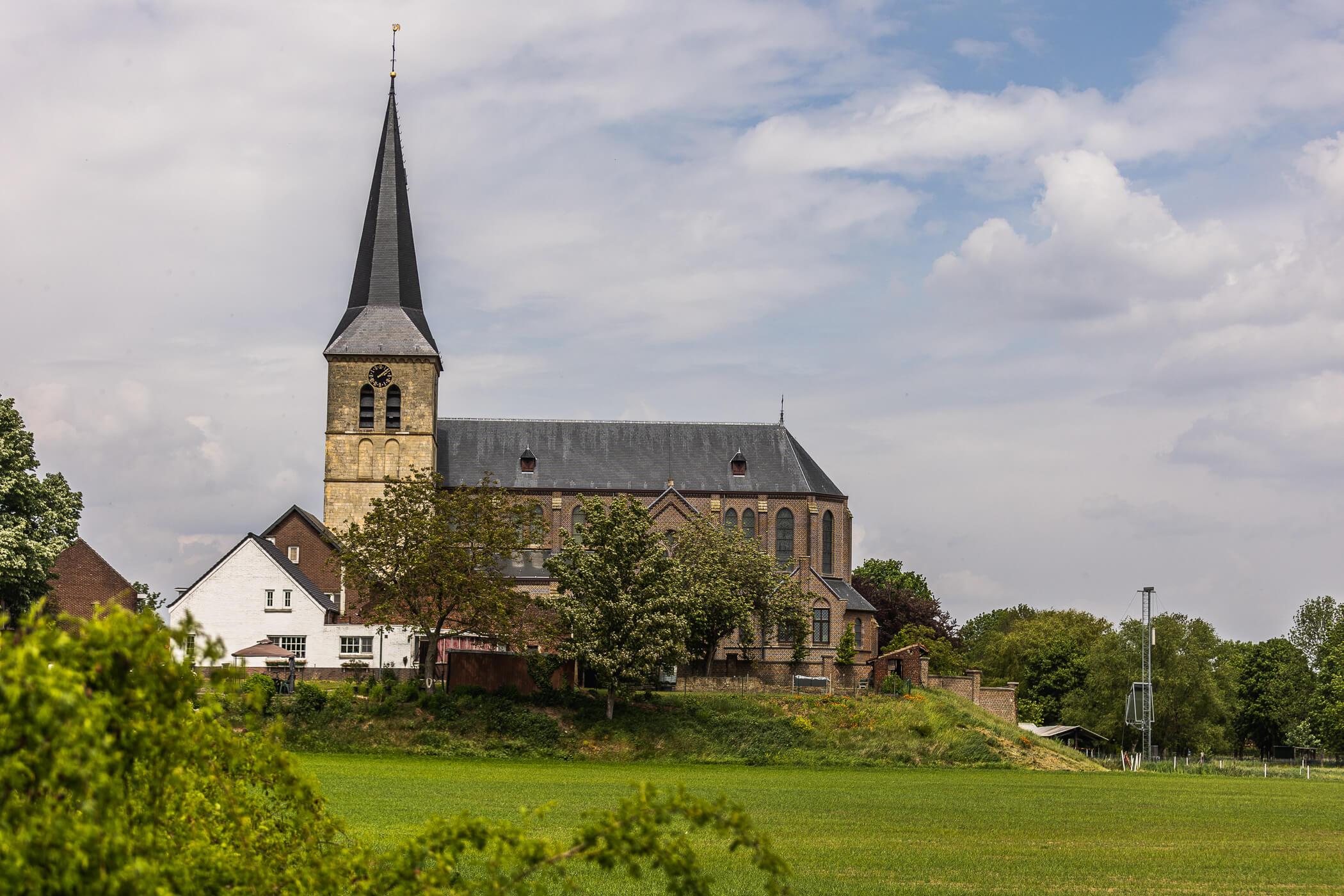
St Martin's Church Kessenich
At the foot of the same mountain is St Martin's Church. The back of the church tower contains remnants of a 12th-century Romanesque church. The marlstone tower dates from the 16th century. The present church was built next to the existing tower in 1898-1899. The beautiful neo-Gothic interior rightfully earned this church the title of 'Pearl of the Maasland'.
In the churchyard next to the church is the gravestone of Guido van Malsen (+ 1618), lord of Kessenich, and Joanna van Kessenich (+ 1636). Next to it is the grave cross of Hobricht van Lind (+ 1678) and his relatives.
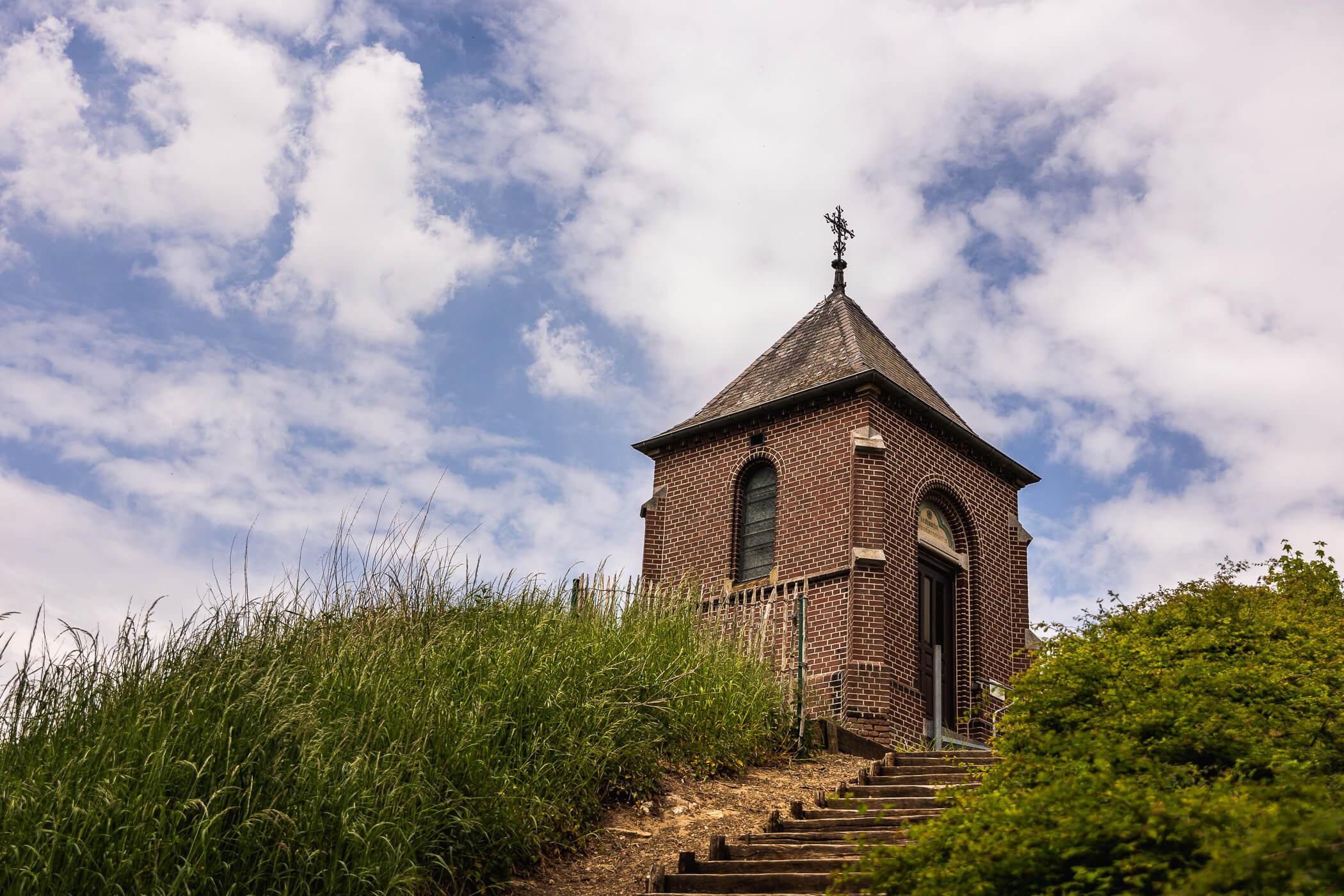
Mottetower
In the 12th century, the lords of Kessenich built a mottetower or defence tower on an artificial hill (mountain) in the current centre of Kessenich. After three excavations, the foundations of the tower and later added structures were uncovered and preserved. At the end of the 19th century, Baron Michiels van Kessenich erected a burial chapel for his family on the same hill.
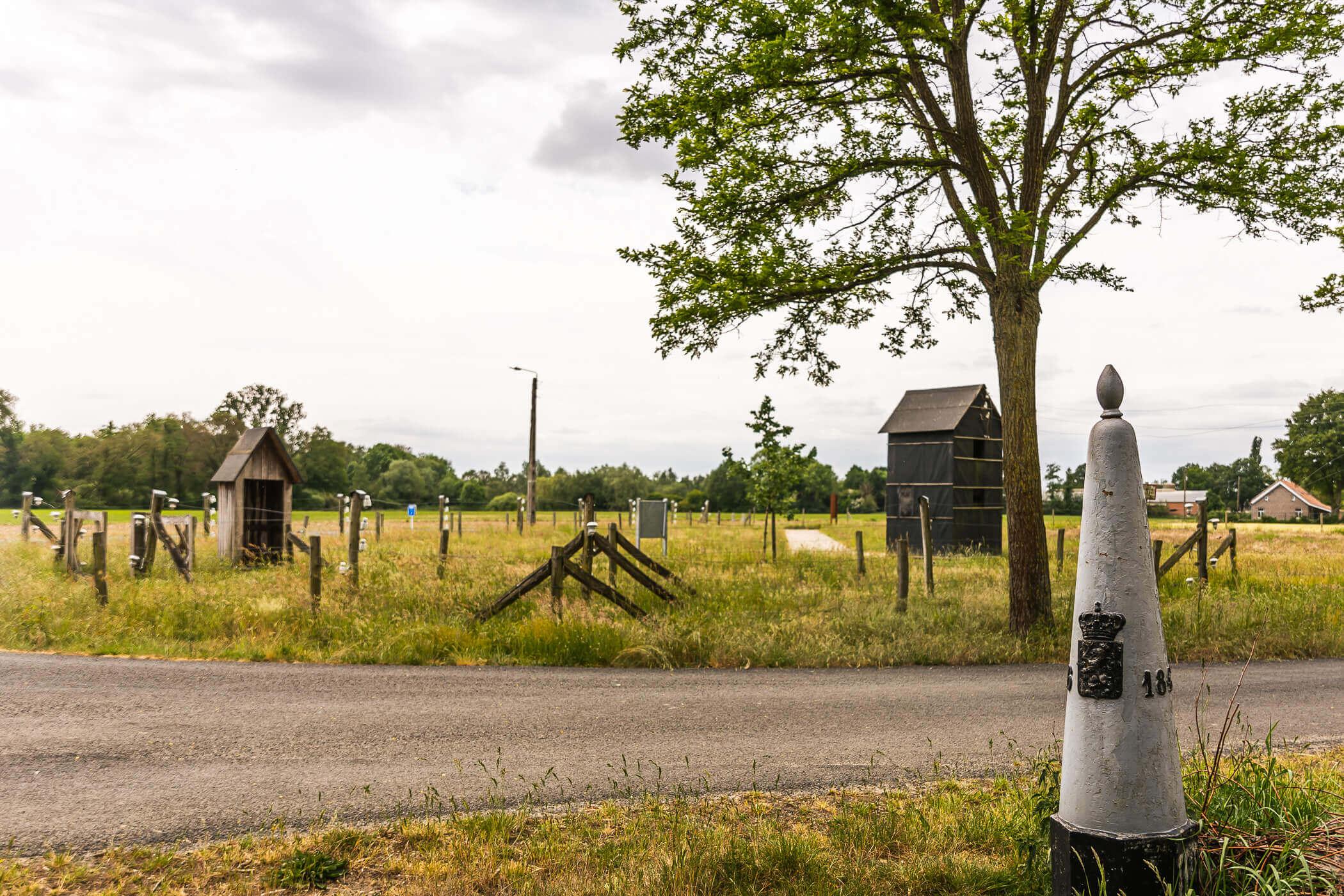
Reconstruction Electric Wire
Right on the border between Belgium and the Netherlands, part of the triple electric wire from WWI was reconstructed. A location where many lost their lives during the war is now a place of peace and modesty. A covered picnic area was built for visitors. A number of information boards provide the necessary explanations about this monument.
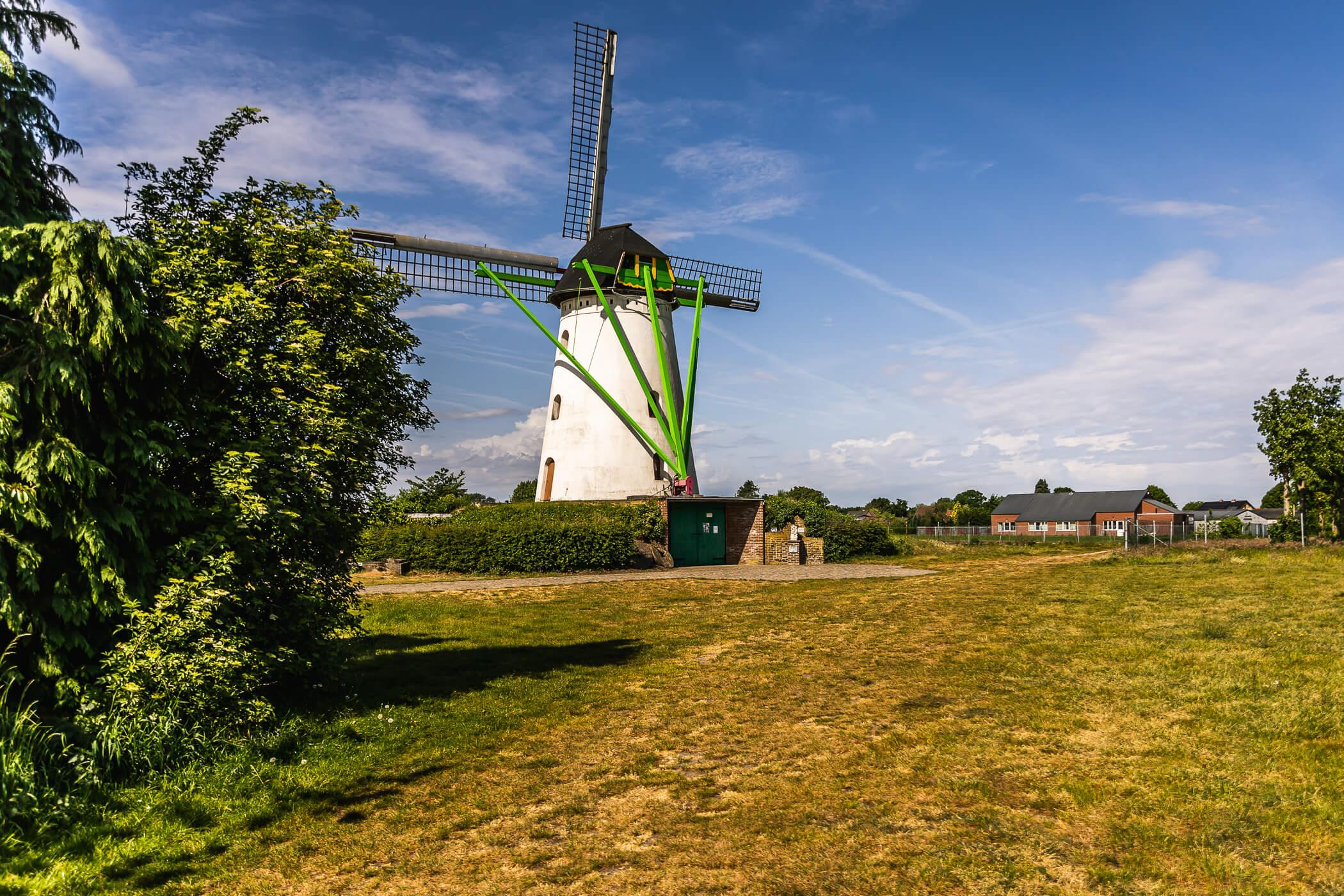
Keijers Mill
This stone mountain or bell mill dates from 1869. The millwork was completely preserved. The mill is still in operation.
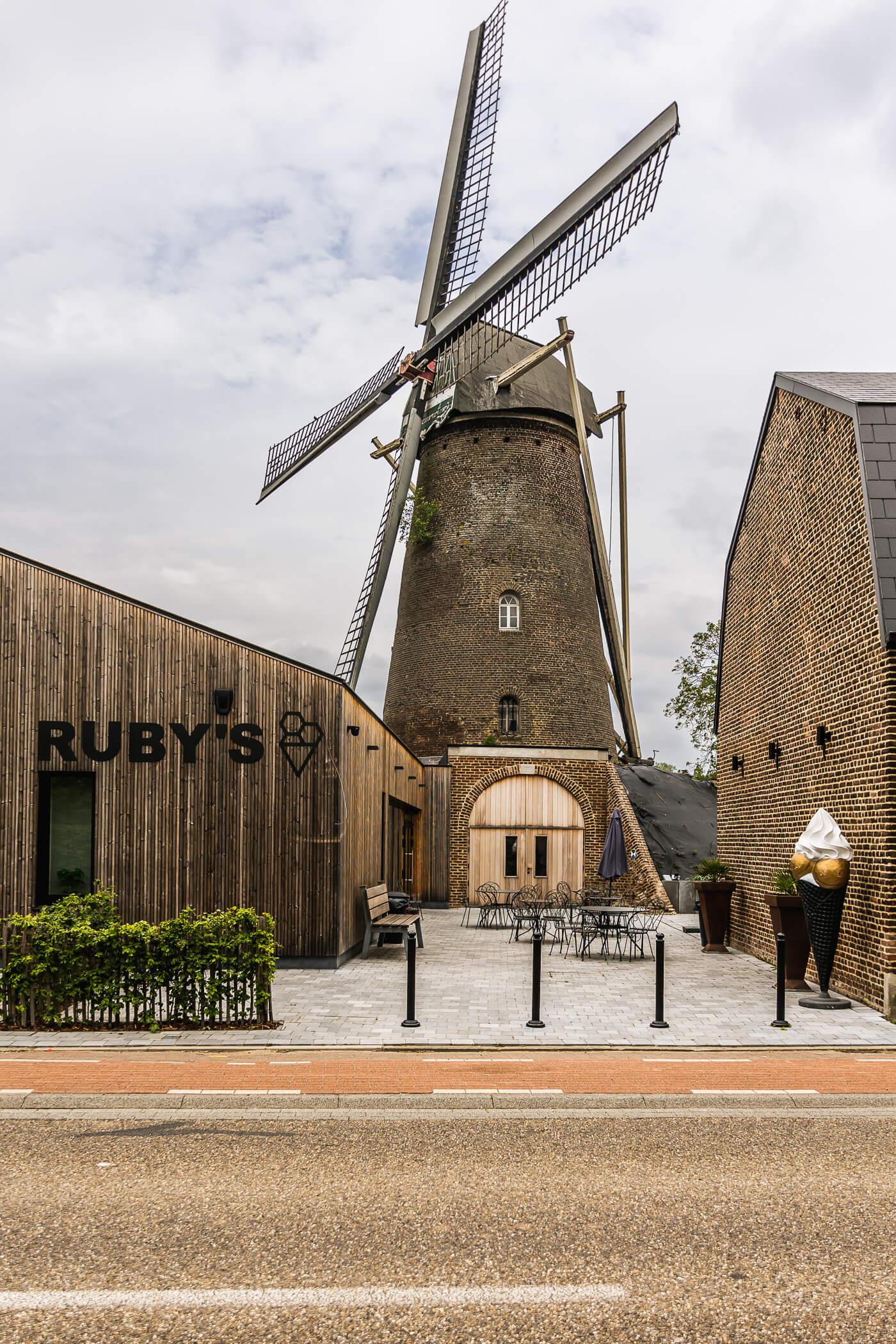
Lemmens Mill
The mill was built in 1856. For 50 years it functioned both as a corn mill and an oil mill. Until 1964, it operated on the wind, thereafter only with a petrol engine.
The mill was completely renovated in 2021. Wedding couples can now also have their civil marriage at this beautiful location.
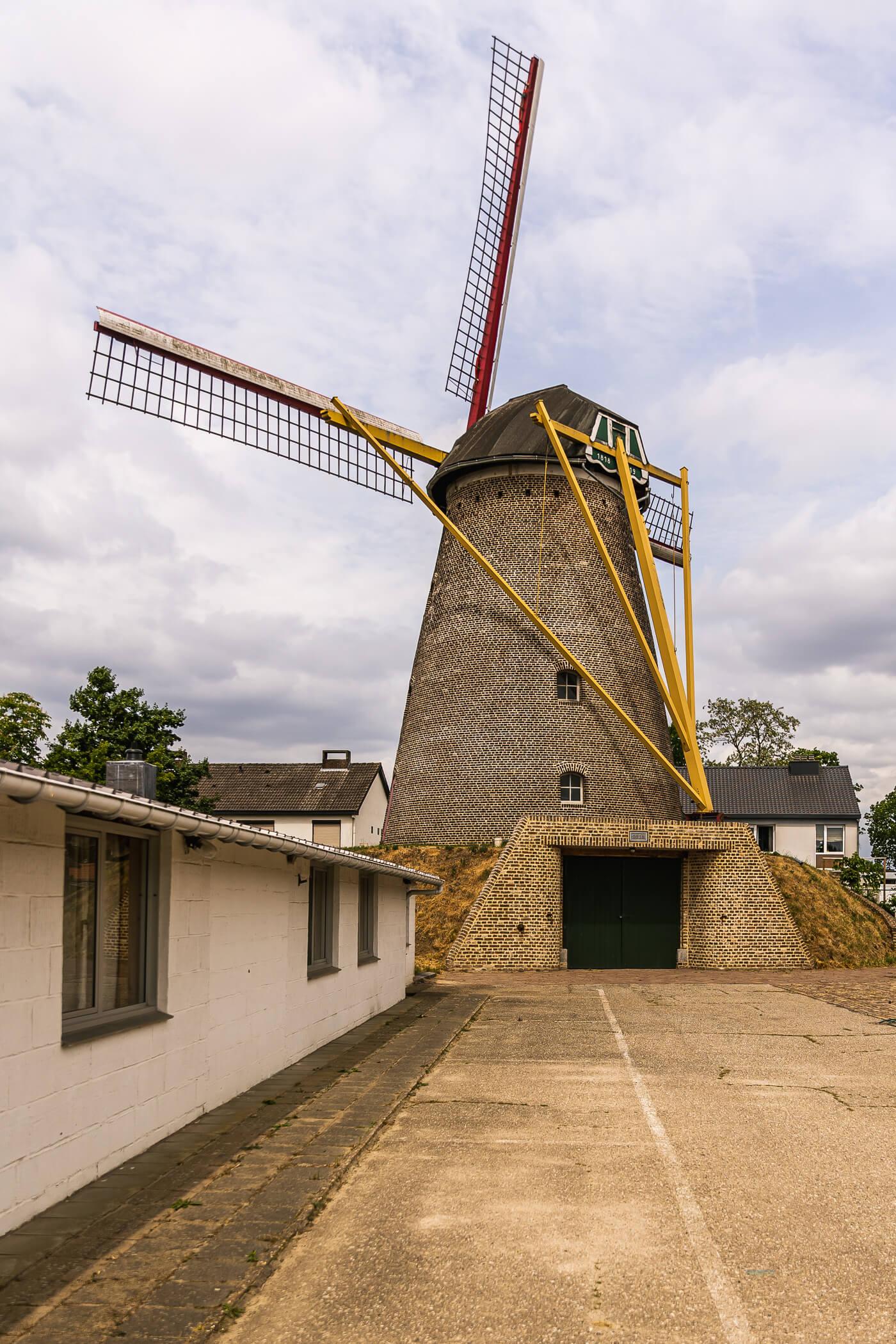
Zorgvliet Mill
Originally, a wooden mill dating from 1817-1818 stood here. It was demolished in 1919. This bell mill took its place. The mill axis is entirely in cast iron: a rarity in Flanders.
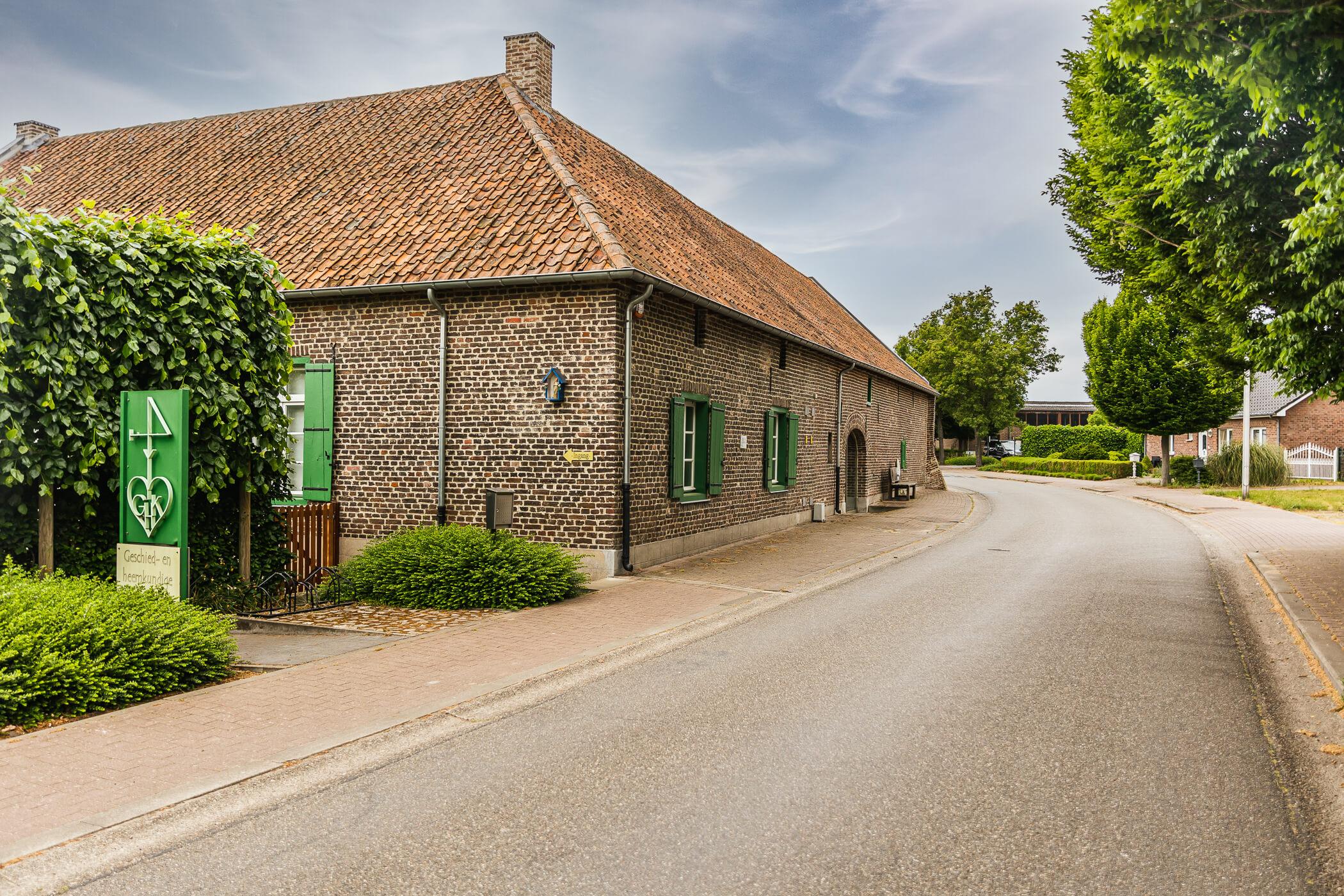
Slichtenhof
Slichtenhof is a farm from the first half of the 19th century. The L-shaped main building dates from 1841.
Exceptionally, the immediate surroundings of the farmstead have been preserved intact. The well with wooden tree and the bakehouse can still be found in the yard. Next to it, the vegetable garden and orchard surrounded by a hawthorn hedge are still present. In 2014, this farmstead was completely restored. Since 2015, Slichtenhof has been home to the Kinrooi Historical and Folkloric Circle.
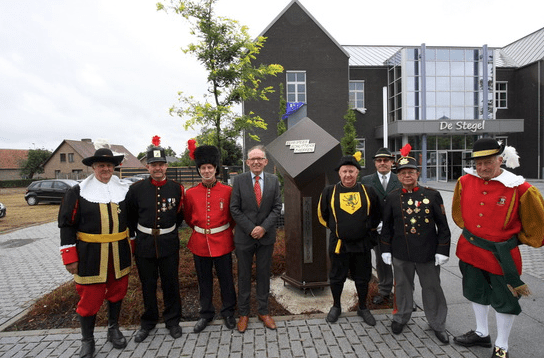
Kinrooi militias
The municipality of Kinrooi still has six militias. Since 2009, the year in which the archers of the merged municipality jointly organised the European Archers' Meeting, it has been the archers' municipality.
Most of them are members of the Maas and Kempen Rifle Association. This marksmen's association will celebrate its 75th anniversary in 2023. On the occasion of this anniversary, a puzzle will be sold at €20 each.
Reserveren
Dit is een vereenvoudigd voorbeeld van hoe een formulier eruit zou zien.
